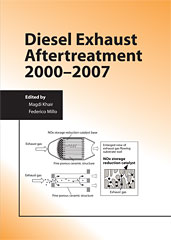Technical Paper
A Review of Diesel Particulate Filter Technologies
2003-06-23
2003-01-2303
Diesel particulate filters (DPF), known as traps in the mid-to late 1970s, were being developed for on-highway diesel applications. However, advanced engine design and in-cylinder engineering enabled diesel engines and vehicles to meet extremely low emission limits, including those of particulate matter (PM) without the need for DPF's or other auxiliary emission control devices. Late in 2000, the US EPA finalized its on-highway heavy-duty diesel emission standards, thus ending speculations regarding its stringency and establishing the lowest limits ever. The new nitric oxides (NOX) and PM limits are seen as technology-forcing. For NOX emissions, the debate rages on among the technical community about the merits of NOX adsorbers and urea selective catalytic reduction. On the other hand, there seems to be little doubt about DPF's as the technical solution for PM.


